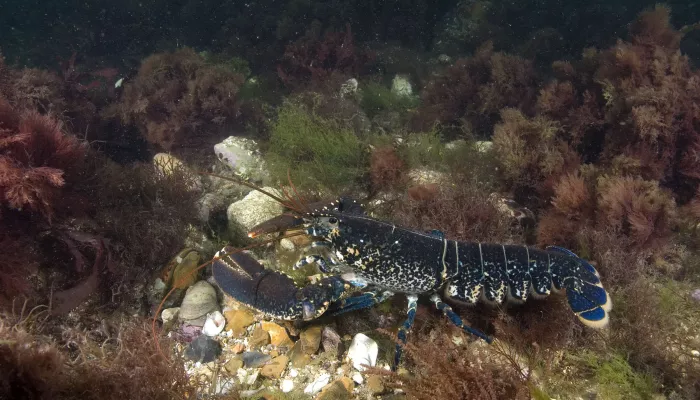About
Common lobsters are very familiar animals, with big front pincers and a long body that ends with a wide tail fan. Their pincers are different sizes, with one used for crushing and one for tearing. Lobsters are crustaceans and are related to crabs and even barnacles!Common lobsters live in crevices and excavated hidey-holes amongst rocks beneath the low tide mark and out to depths of 60m. They hide during the day and come out to feed at night. Lobsters are scavengers, searching out food on the seabed, and will eat molluscs, sea urchins and other smaller crustaceans. If you spot a lobster with thousands of tiny jelly balls on their legs, don't worry they're her eggs! Female lobsters carry their fertilised eggs around for up to 12 months to protect them from predators before they hatch. We say a female with eggs is "berried".
Lobsters grow by shedding their hard exoskeleton in a process known as moulting. During this process they are also able to grow back lost limbs! As a lobster gets larger it moults less frequently with adults only moulting ever 1 or 2 years.

